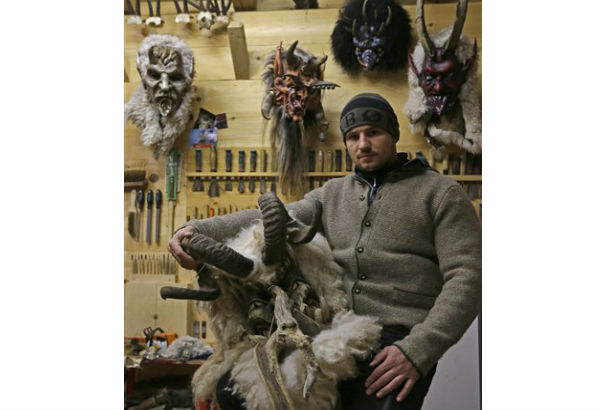German craftsman's Christmas Masks
INZELL, Germany — Hansi Schwabl has carved masks out of wood for a decade, turning the craft from his native Bavarian town of Inzell into a Christmas hobby.

Wood carver Hans Schwabl (26) poses with a traditional wooden Perchten mask in his factory in Inzell, southern Germany, Thursday, Nov. 27, 2014. (AP Photo/Matthias Schrader)
The masks are worn by companions of Saint Nicholas who goes house-to-house with gifts in an early December tradition.
During the Buttnmandl parades, unmarried men, known as Buttnmandl and Krampusse, are dressed in straw or skins with wooden masks or skins over their heads and large cow-bells tied around their hips to make loud noises. They follow Saint Nicholas from house to house on December 5 and 6 every year to bring luck to the good ones and punish the idles. The Perchten parades take place after Christmas.
Each mask takes about 20 to 30 hours of work to produce, and Schwabl has lost track of how many he has made.
The 26-year-old makes the first rough cuts in a piece of pine with a chain-saw, and carves the rest by hand.

Wood carver Hans Schwabl (26) paints at a traditional wooden Perchten mask in his factory in Inzell, southern Germany, Thursday, Nov. 27, 2014. (AP Photo/Matthias Schrader)
After carefully painting the mask, he adds hair from horse or sheep. Glass eyes are inserted as the finishing touch. The 4-5 kilogram (9-11 pound) masks sell for between 250 and 600 euros ($300-$750).



















